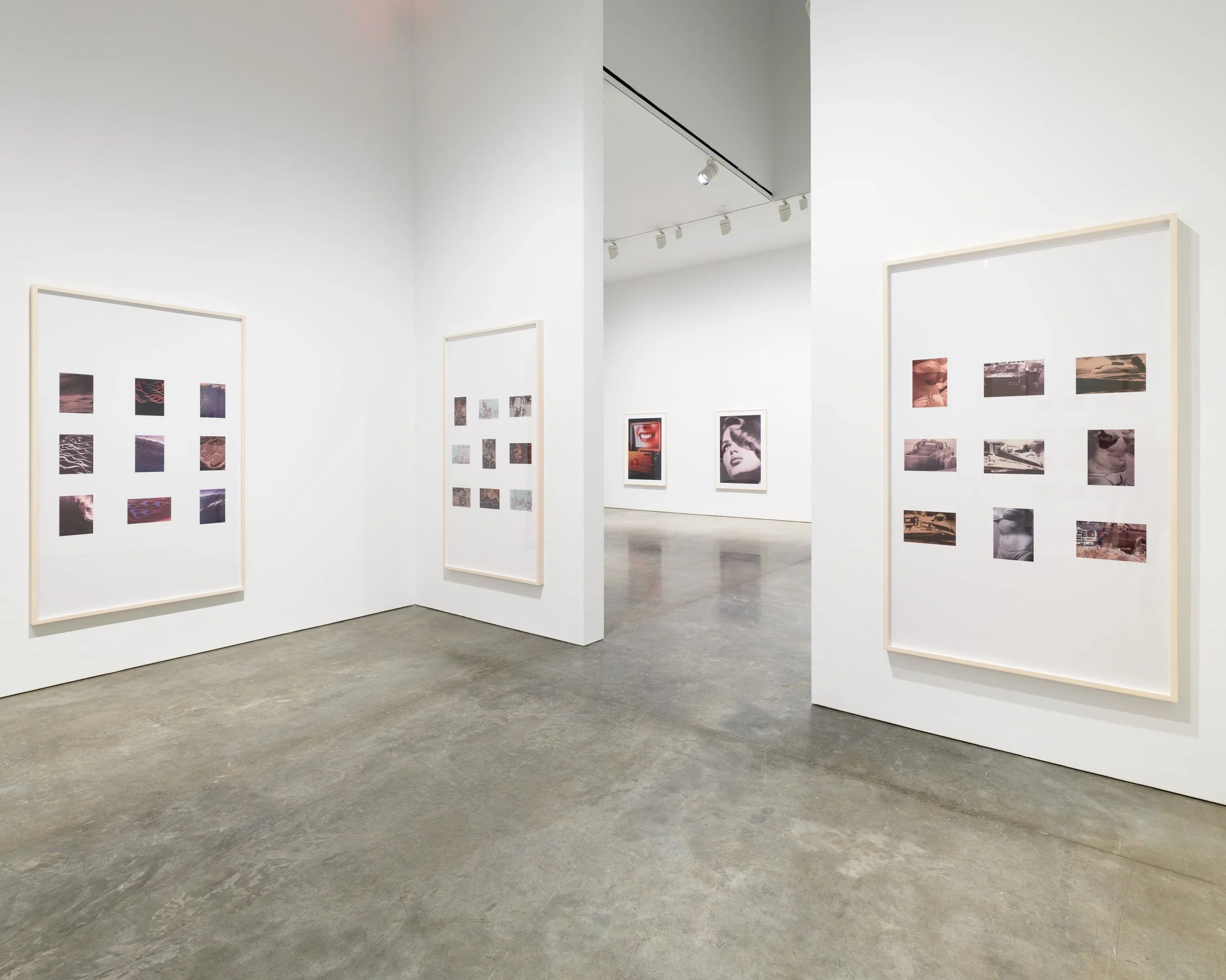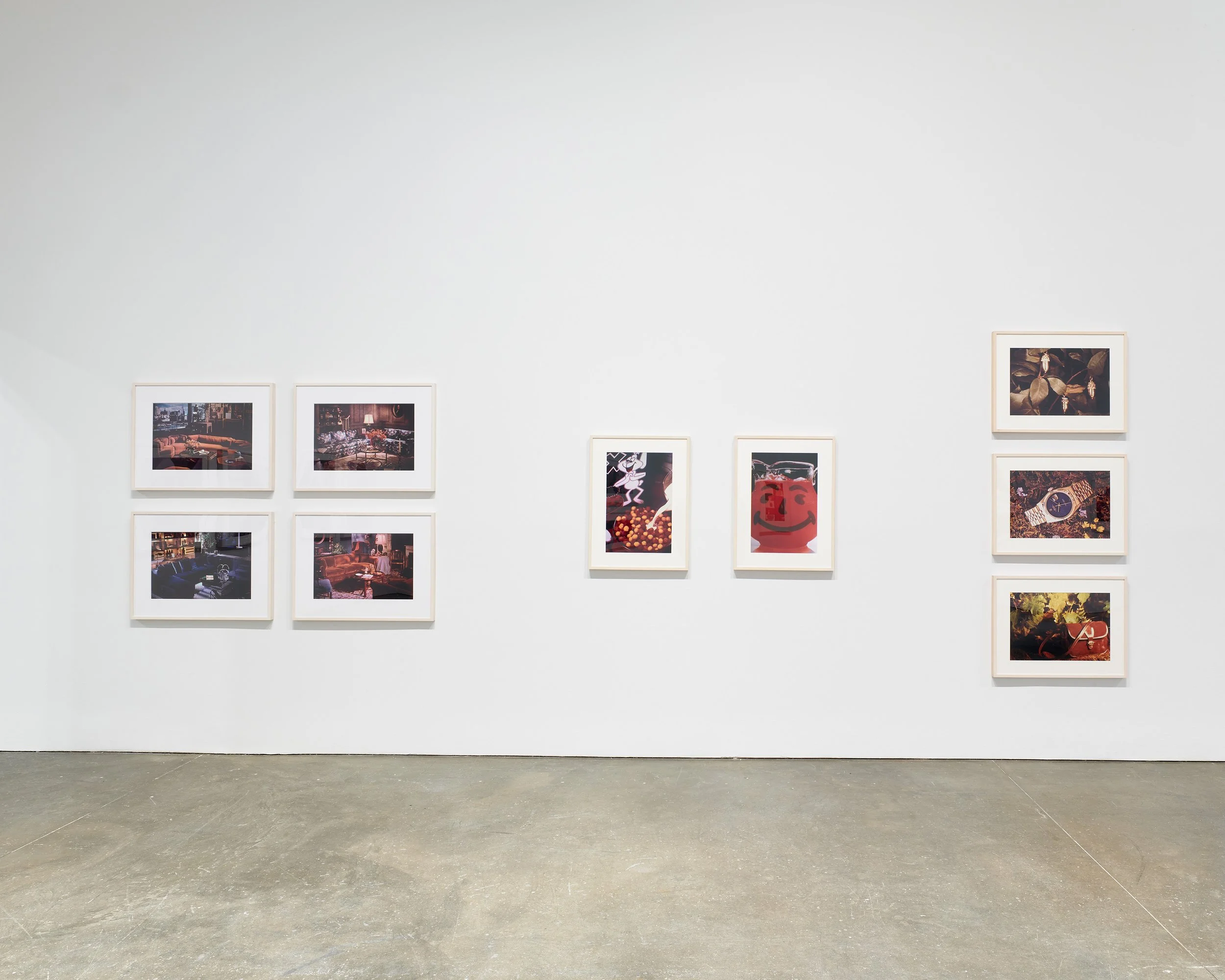RICHARD PRINCE: EARLY PHOTOGRAPHY, 1977-87
Gagosian is pleased to announce Richard Prince: Early Photography, 1977–87, at the 522 West 21st Street gallery in New York. The exhibition features many of Prince’s iconic cowboy, girlfriend, and advertisement photographs, some of which have not previously been exhibited in the city.
March 9 – April 13, 2024
Collecting, chronicling, and repurposing examples of discomfiting mainstream humor alongside images from a variety of mass media, Prince chronicles the intersection of America’s vernaculars and subcultures in the construction of its national identity. In 1977, he began using a process of “rephotography” to appropriate shots from advertising and the lifestyle press, redefining the concepts of authorship and originality—an approach he would later extend to include social media.
In the black-and-white photograph Untitled (Self-Portrait) (1980), Prince portrays himself in eye makeup and lipstick along with a suit and tie, plumbing themes of alienation and uncertainty found throughout his oeuvre. As the artist wrote in his 1983 essay “Cowboys: The Perfect Tense,” “Some people would like to try to change places, just for a day, with maybe someone they admired or even envied, to see what it would be like, to see if it would be what they’d always heard it would be.”
In works such as Untitled (Couple) (1977) and Untitled (Man Looking to the Left) (1978), Prince explores tropes of masculinity in rephotographed images of square-jawed, suit-wearing models, calling their authenticity into question through a focus on heavily styled representation.
Other works depict advertisements for objects such as luxury watches and pens—items that Prince has described as being foreign to him—in a polished but generic manner that suggests a lack of individual author. From Prince’s perspective, this makes his sources fair game for recontexualization; he categorizes the original photographers as having been commissioned: “They were for hire,” he states, “I was working in a completely different way.”
Many of the works reveal a fascination with the photographic medium as a tool for categorization and cataloguing that exhibits a sociological and anthropological slant: Untitled (Three Women Looking in the Same Direction) (1980) assembles its subjects purely according to the attitude of their heads; Criminals and Celebrities (1986) groups images of the famous and the infamous in the act of attempting to shield themselves from the camera’s intrusive gaze; and Untitled (Fainted) (1980) gathers four stills of unconscious women.
In this, Prince’s organization of images mirrors the currency (and inherently partial nature) of stock photography and anticipates the ubiquity of categorized and labeled photographic images in the era of Internet searches and artificial intelligence—a period during which the medium has become at once more available and less “reliable” than ever.


